If you’re starting a raw food diet or a plant-based diet, you definitely want to make sure you learn enough about it so you can achieve success on a this lifestyle. Having thrived on a mostly raw food plan for 16 years in between us, we’re excited to share the ins and outs about eating this way.
When people hear about raw foods, they usually think that it’s all to do with eating a few salad leaves with some sticks of carrot and so is a dull and tasteless diet.
Well, the exact opposite is true.
Starting a raw food diet actually brings with it exciting new flavours, variety, and abundance. Raw meals are super easy and quick to prepare and the health benefits are tremendous.
What does it mean to eat a fully raw food diet or a high raw plan?
A raw food diet is one which is made up of whole, fresh, ripe, vegan produce, such as fruits, vegetables, nuts and seeds.
If you eat a fully raw vegan diet, your produce will be consumed in its raw state and not cooked.
Some people prefer to eat a high raw diet, where the majority of their daily calories come from raw food, whilst some of their calories come from simple cooked vegan options.
Starting a raw food diet: why you should do it
Eating raw foods is something that can take your health and whole life to a whole new vibrant level.
Just some of the health benefits of eating this way include:
- Improved energy levels
- Clearer skin
- Natural weight loss
- Improved digestion and elimination
- Improved nutrition
- Clearer mind and focus
- 24/7 natural detox of your body
- Avoidance of artificial food additives
- Avoidance of unbalanced and unhealthy foods like refined sugar and oils
The science behind starting a raw food diet
Studies show great evidence for the protective and healing ability of this diet, which include:
- Healthy Bones. A study found that people who follow a raw food, vegan diet had lower bone mass than those eating a standard American diet, yet their bones were healthy with no signs of osteoporosis. (1)
- Lowers risk of cancer. A study found that raw food vegans had lower IGF-1 hormone levels in their bodies and so a lower risk of contracting various types of cancer. (1)
- Better antioxidant status. A study found that a raw food, vegan diet provides significantly more dietary antioxidants than a cooked, omnivorous diet, and that long-term followers of this diet have a better antioxidant status than the omnivorous diet eaters. (2)
- Longer, healthier life. A study found that there was a decreased in all-cause mortality, including cancer and heart disease mortality for people eating up to 7+ portions daily of fruits and vegetables. (3)
- Improved rheumatoid arthritis. A study found that people with rheumatoid arthritis noted a marked improvement in their pain, swelling of joints and morning stiffness when eating a raw food, vegan diet. (4)
- Improved fibromyalgia. A study discovered that subjects with fibromyalgia noted an improvement with their joint stiffness, pain and with their quality of sleep when eating a raw food vegan diet. (4)
What kind of raw food diet is the healthiest?
If you’re starting a raw food diet, you need to follow the right one.
Generally speaking, there are two approaches to eating a raw food diet:
- You’re getting most of your calories from carbohydrates in fruits.
- You’re getting most of your calories from fats and restrict your consumption of fruit.
The mainstream raw food diet is based upon fat and this would include eating lots of foods like nuts, seeds, coconut fat, oil and avocadoes.
Even though these kinds of foods (except for oil) can be very healthy for you to eat, they don’t work well when eaten in large quantities and are being relied upon as your main source of calories.
Some of the health issues that can result from eating a high fat, raw food diet include:
- Brain fog/lack of mental clarity
- Depressed mood
- Fatigue
- Food cravings
- Constipation and digestive issues
- Blood sugar issues, including candida
A healthy raw food diet is one that will be high in carbohydrates and lower in fat, with 10-15% maximum of your total daily calories from fat.
A high fruit, raw food diet will not negatively affect your blood sugar levels, which is contrary to many people’s belief.
In fact, it can actually help you balance and heal issues with Candida, hypoglycemia and type 2 diabetes, as stated in this video.
This then ensures that your body’s cells are getting the fuel (glucose) that they need to work to their optimal level and achieve healthy and balanced blood sugar levels.
But will you be eating too much sugar on a fruit based diet?
Many people erroneously think that if you eat too much fruit then it has to be bad for you because it contains lots of sugar.
But this, in fact, is incorrect.
Indeed refined sugar is unhealthy for you. It’s a single nutrient which has been processed and separated from all the other nutrients, which makes it an unbalanced food that’s detrimental to health.
In stark contrast, the sugar from whole fruits is combined with all the other nutrients, which all work together to give the human body exactly what it requires.
There is a study that was carried out on 17 people over a 3 to 6 month period eating 20 servings of fruit a day.
They found that the participants suffered no ill effects from eating a diet that contained so much fruit and instead concluded that the diet had possible benefits for a number of health factors, including blood pressure, body weight, insulin levels and blood lipid levels. (5)
Another more recent study that again fed participants with 20 servings of fruit a day diet for several weeks came to similar conclusions and also found that the participants achieved an amazing 38 point drop in their LDL cholesterol levels. (6)
Here’s our video and article that dissolves the 7 popular myths about fruit, fructose and sugar.
Calories: how much to eat?
If you’re starting a raw food diet, you need to pay attention to the calories that you’ll be eating.
As a high carb raw food diet is typically lower in calories per bite than a standard western diet, you have to make sure that you are eating enough calories every day.
If you fall short of calories on a continuous bases, you’ll experience cravings, unwanted weight loss and health issues.
If you’re under eating on calories, it will also mean you are under eating on nutrients that your body needs to be healthy.
After coaching people on a raw food lifestyle for 5 years now, under eating on carbohydrates and over eating on fats is the biggest and most common mistakes many raw foodists make.
Weight loss on a raw food diet
The great thing about eating a high fruit, low fat, raw food diet is that you can eat even more food than you did before, yet still lose excess weight.
How is this even possible? We’ll, for example when compared to a standard American diet the number of calories per bite is significantly lower.
Basically this means that the raw foods you are eating typically contain significantly less calories than the kinds of highly processed, fat laden and sugar laden foods and drinks that make up so much of many peoples diets.
Add to this the fact that so many processed foods are full of unhealthy and toxic, chemical ingredients that cause damage to the body, including excess weight gain and hormonal imbalances, then it’s easy to understand how a plant-based, raw foods diet is a win-win!
How to start a raw vegan diet in 4 steps
So here are our top five steps that can help you transition to a raw vegan diet.
- Step 1: Transform your kitchen
Start from your fridge and clean out all the old high-fat foods, animal foods, salty foods, cakes, pizzas, burgers, fries, sodas, milk shakes.
If you don’t have those tempting old foods around you, it will be much easier for you to transition.
Beyond all the amazing benefits for your mind, body and soul, this lifestyle also gives you the opportunity to save a lot of time in the kitchen, which you can invest into other health activities of your choice.
- Step 2. Stock up on raw fruits and greens and learn how to count your calories
Make a menu plan for the week ahead, create a shopping list for yourself and head out shopping for fresh produce.
Start logging your daily food intake in free online food tracking software like cronometer and nutridiary to make sure your raw nutrition is balanced.
- Step 3: Go high-carbohydrate, raw or high raw vegan
We recommend a rapid transition to a high-raw and all vegan lifestyle.
Animal products can be loaded with additives, hormones, and antibiotics. They contain excessive levels of fat (including cholesterol) and sulfur-containing amino acids (protein) such as methionine – all of which burden your body and lead to ill health.
The abundance of low-fat plant-based foods that you will be consuming will help your body start cleansing itself of previously stored toxicity and excessive fat, resulting in natural weight loss and improved health.
So from now on, choose only plant-based foods and include as many raw fruits and vegetables as you can.
- Step 4. Learn how to substitute
When starting a raw food diet, to avoid craving old unhealthy foods, substitute them with new and healthy ones!
If you find yourself craving sugars, include more sweet fruit in your diet, such as bananas, dates and persimmons and make sure you eat enough calories.
If you crave salt, make sure you eat enough calories and use both fresh and dried tomatoes, celery and green leafy vegetables to obtain enough of this mineral.
If you were addicted to chocolate in the past, swap it with raw carob powder and add it to your smoothies, such as a banana-date and carob powder smoothie (super yummy!).
Protein on a raw food diet
Many people starting a raw food diet are under the false assumption that you need to consume animal foods to get enough protein.
Well, this is completely untrue.
In fact, the World Health Organization recommends that as an adult you should get 0.8g of protein per kg of body weight. (7)
And guess what? On a high fruit, raw food diet that also contains lots of green leafy vegetables and some nuts and seeds this is easily doable.
Avoiding the 2 most common raw food diet deficiencies.
Because there is no vitamin B12 in plant foods, which is a vitally important nutrient for human health, it is highly recommended to supplement with this vitamin when you eat a vegan or a raw vegan plan to avoid a deficiency.
Vitamin D is also a vitally important nutrient.
On a high fruit, raw food lifestyle the main way for you to obtain your vitamin D is normally from sun exposure.
But if you don’t get enough sun exposure, then you’ll need to monitor your vitamin D levels and are best supplementing with it when necessary. This is especially important if you live in a more northern climate where there are long winters with little or no chance to expose your skin to the sun.
Should you only eat organic raw foods?
If you’re starting a raw food diet, you may have concerns about organic vs conventional.
Everyone wants to eat the healthiest foods and eating organic is undoubtedly great for your health.
But, if for some reason you cannot source all of your produce as organic, then make sure that you source as much as you can, especially your vegetables and fruits that you cannot peel.
So our recommendations for getting your fresh produce would be:
- Buy organic whenever you can.
- If at all possible, grow your own food.
- Inform yourself about produce growing practices and ask the growers the relevant questions, such as: “What fertilisers and pesticides do you use?”
- Use veggie wash, bicarbonate soda, grapefruit seed extract or apple cider vinegar for soaking your produce to help remove pesticide residues, if you need to.
Cutting back consumption of fruits and vegetables is never a solution to minimizing exposure to chemical residues and is a false economy in the long run.
Ready for your big health leap?
I’m excited to invite you to my brand new online training.
During my FREE masterclass, I will walk you through the 5 steps which our clients use to overcome ongoing health conditions and release 10-50 lbs of extra weight … whilst never restricting themselves of carbohydrates and sugar.
Don’t miss out, claim your spot here!
Sources:
- http://jamanetwork.com/journals/jamainternalmedicine/article-abstract/486478
- https://www.ncbi.nlm.nih.gov/pubmed/7491884
- http://jech.bmj.com/content/early/2014/03/03/jech-2013-203500.full
- https://www.ncbi.nlm.nih.gov/pubmed/10943644
- https://www.ncbi.nlm.nih.gov/pubmed/5573330
- https://www.ncbi.nlm.nih.gov/pubmed/11288049
- Protein And Amino Acid Requirements In Human Nutrition. Report Of A Joint WHO/ FAO/UNU Expert Consultation. 2007. Accessed here.





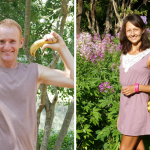
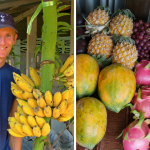
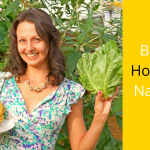
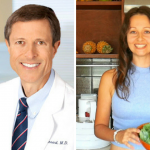

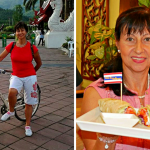
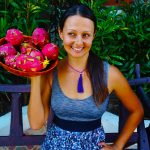
I was a bit concerned about eating so much fruit on the 80/10/10 diet because of my Candida.
But now I understand that fruit is healthy to eat.
I wonder if I can literally eat fruit for breakfast, lunch and dinner if I eat a raw food diet, or shall I limit it a bit because of my Candida?
You don’t need to limit fruit at all. With Candida, you want to eat greens with your fruit meals and exclude dried fruit.
There’s a lot of valuable information that I offer in my free masterclass. You can sign up to it here: http://www.rawsomehealthy.com/7steps
Really interesting article. I’m glad you’ve included scientific information as I though that there’s no science to back up raw foods, but clearly I was wrong.
That lady’s transformation is incredible by the way, I got so inspired to get more serious about the raw food diet.
Just need to buy more fruit as I don’t want to be eating a high fat one.
Thanks!
Hey Yulia and Paul,
This is definitely a helpful post for someone who is starting a (high) raw vegan diet. You are presenting a lot of health benefits with aligned studies. This is something that is rarely seen in the web. *thumbs up*
You write that there are two sources to get enough enough calories on a raw vegan diet. One is fruit and the other (the worse one) is fat. You may don’t know but there is actually a third one which is very suitable for a high carb raw vegan diet – sprouts. Check out Sproutarianism on youtube/google. This is maybe another option for people in colder climates or those who just don’t want to eat fruit all day long or cannot afford it. I know that for many people it is hard to get good quality ripe fruits.
Also another thing that I suggest is not only to stick to fruits, vegetables, nuts and seeds only. Try to include wildplants in your daily meals as often as you can and as much as you can. The healing power is in these plants that grow in our backyards and not alone in eating raw fruits and vegetables that were harvested green and shipped around the globe.
I don’t have a problem to find ripe fruits here in the subtropical climate of southern spain, but when I lived in Berlin/Germany it was not always easy to find ripe fruit. I bought to many times the toxic stuff from the markets and I wish I had been told earlier about sprouts. For me e.g. buckwheat sprouts make it much more easier to stay raw and get plenty of minerals. Try for your self and tell what your experience is, please.
Thanks for sharing your post, the steps and your research. Still it is useful and motivating.
Kind Regards,
Michael
Hi Michael,
Thank you for your comments. Sprouts are problematic for many people to digest, so we’d not advice to base your diet on them. Bananas, oranges, dates, apples and pears are possible to get hold of during the winter in the northern climate.
We were able to sustain ourselves during the winter in England on the fruit-based lifestyle and I know many other people who are able to eat this way in cold climates too.
Of course there’re also greens and some nuts and seeds that you would add to your diet, which is part of the fruit-based lifestyle.
Pingback: Healthy, Satisfying Ways to Introduce Raw Food into your Diet